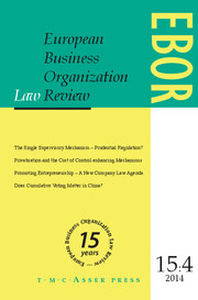Article contents
New Trends in Auditor Liability
Published online by Cambridge University Press: 04 October 2011
Abstract
EC Recommendation 2008/473/EC of 5 June 2008 concerning the limitation of the civil liability of statutory auditors and audit firms presented three methods for limiting auditor liability: (1) the establishment of maximum financial amounts of compensation (liability caps); (2) adoption of proportionate liability; and (3) limitation of liability by agreement between the auditor and his client. The Recommendation was based on several arguments according to which the limitation of liability would be necessary to guarantee the sustainability of the audit profession given the enormous threats posed by civil litigation against auditors, especially against the member firms of the biggest international networks.
The paper starts with an analysis of the arguments presented by the European Commission for issuing the Recommendation. Each of the proposals made is also discussed separately. This preliminary approach serves as a platform for the treatment of issues not considered during the groundwork for the Recommendation, such as the risks of ‘veil piercing’, that threaten the shielding structure of international audit networks and the impact of the recent financial crisis. As regards the latter, the paper carries out an assessment between the increasing risks of the crisis-related lawsuits for the audit profession and the need to strengthen investor confidence in auditors' work. Moreover, it includes a discussion of recent developments in EU audit policy as a result of the crisis and particularly of the findings (e.g., Valukas Report) that arose from some of the major bankruptcies occurring in the US and in Europe.
The results of the analysis of the first arguments used by the EC together with the impact of the crisis lead to a conclusion regarding the need for an updated interpretation of the 2008 Recommendation.
Keywords
- Type
- Articles
- Information
- European Business Organization Law Review (EBOR) , Volume 12 , Issue 3 , September 2011 , pp. 415 - 436
- Copyright
- Copyright © T.M.C. Asser Press and the Authors 2011
- 3
- Cited by


